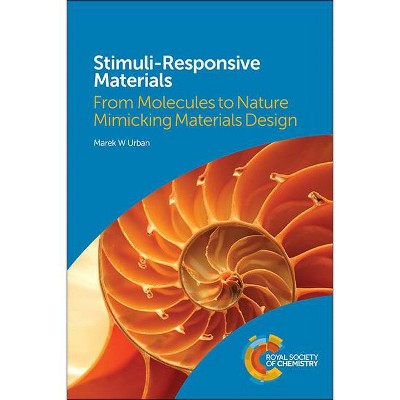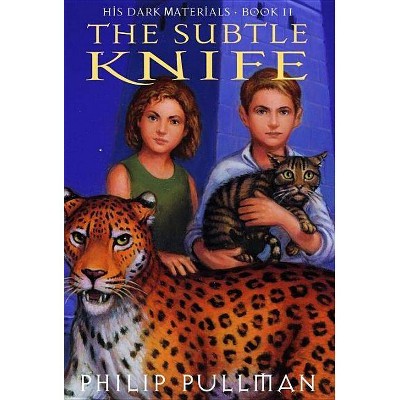Stimuli-Responsive Materials - by Marek W Urban (Hardcover)

Similar Products
Products of same category from the store
AllProduct info
<p/><br></br><p><b> About the Book </b></p></br></br>The ability for a material to change properties in response to external stimuli is an attractive feature for numerous applications and as such stimuli responsive materials are gaining attention across many different fields. This book introduces the concepts of stimuli-responsiveness, including the fundamental materials properties required for design. It provides readers with comprehensive scientific principles and developments of stimuli responsive materials, as well as the recent technological advances. Written by a renowned expert in the field, this book is suitable for anyone interested in stimuli responsive materials working in polymers, biochemistry, biotechnology and materials science.<p/><br></br><p><b> From the Back Cover </b></p></br></br>The ability for a material to change properties in response to external stimuli is an attractive feature for numerous applications and as such stimuli responsive materials are gaining attention across many different fields. In order to design new materials for a particular purpose it is essential to understand the scientific principles governing the response, Stimuli Responsive Materials: from Molecules to Nature Mimicking Materials Design focuses on just that. The book introduces the concepts of stimuli-responsiveness, including the fundamental materials properties required for design, and each chapter details different response systems including biochemical, chemical and physical. To provide readers with the comprehensive scientific principles and developments of stimuli responsive materials as well as the recent technological advances each chapter has a unique structure and written at three levels from Basic and fundamental "must know"concepts to more advanced topics and the most advanced scientific treatment, references and technological advances of stimuli responsive materials. Written by a renowned expert in the field and experienced editor on the subject, this book is suitable for anyone interested in stimuli responsive materials working in polymers, biopolymers, biochemistry, and biophysics, biomaterials, bioengineering, materials engineering and biotechnology, chemistry and physics, ceramic, metals, composites, and materials science.<p/><br></br><p><b> Review Quotes </b></p></br></br><br>This book focuses on designing stimuli-responsive materials by mimicking nature--an excellent source of inspiration for conceiving new products with tailored properties and desired functions. The book is structured into 12 chapters and covers a wide range of topics, from controlled synthesis of polymers to various aspects of stimuli responsiveness in macromolecular blocks, polymer brushes, surfaces, and interfaces, to nanoand micro-materials, and photochromic and photorefractive polymers. The common essence of these stimuli- responsive materials resides in their heterogeneity at the nanoscale--the origin of energy excess able to be converted into other energy forms as a result of various external stimuli: temperature, solvent polarity, pH, ultraviolet/visible light, electrical potential, magnetic field, or combinations of these. Starting from biologically responsive polymers, special attention is paid to stimuli-responsive materials applied in medical therapy, nanomedicine, enhancing imaging and target delivery, and selfhealing and shape-memory materials, with a perspective for these materials to shape the future of human existence. Most of the illustrations are appropriate and enable a deeper understanding of the scientific arguments. Chapters are on topics such as tissue engineering, microfluidics, biosensors, molecular electronics, and photochromic devices. Each chapter starts with short definitions of terms or phenomena and provides clear explanations based on physicochemical proofs, combining structural characteristics given by molecular interactions with adequate thermodynamic and kinetics approaches. Each chapter ends with a reference list. The book is accessible to senior undergraduate and graduate students in materials chemistry and physics. At the same time, this monograph is also useful for specialists in materials science and engineering, providing stimulating ideas for further advances in materials design mostly needed in nanofabrication.--Aurelia Meghea "MRS Bulletin "<br><br>The book is accessible to senior undergraduate and graduate students in materials chemistry and physics. At the same time, this monograph is also useful for specialists in materials science and engineering, providing stimulating ideas for further advances in materials design mostly needed in nanofabrication.--Aurelia Meghea "MRS Bulletin "<br><br>Most of the illustrations are appropriate and enable a deeper understanding of the scientific arguments. Chapters are on topics such as tissue engineering, microfluidics, biosensors, molecular electronics, and photochromic devices. Each chapter starts with short definitions of terms or phenomena and provides clear explanations based on physicochemical proofs, combining structural characteristics given by molecular interactions with adequate thermodynamic and kinetics approaches. Each chapter ends with a reference list. The book is accessible to senior undergraduate and graduate students in materials chemistry and physics.--Aurelia Meghea "MRS Bulletin "<br><p/><br></br><p><b> About the Author </b></p></br></br>Prof. Dr. Marek W. Urban is an internationally and nationally recognized scientist in the area of polymeric stimuli-responsive films and coatings. He is the J.E. Sirrine Endowed Chair and Professor of materials science and engineering at Clemson University, USA. He graduated from Marquette University (MS), Michigan Tech (PhD), and did a post doc at Case Western Reserve University. He has authored over 300 research papers, three books, and edited 8 American Chemical Society Advances in Chemistry Series books and one by Wiley-VCH. He chaired the Gordon Research Conference on Polymer Films and Coatings and is the recipient of numerous awards. The current focus of his research is on stimuli-responsive polymeric materials as well as molecular processes governing their behaviour as well as the role of nano-shapes in heterogeneous networks are of particular interest.
Price History
Price Archive shows prices from various stores, lets you see history and find the cheapest. There is no actual sale on the website. For all support, inquiry and suggestion messagescommunication@pricearchive.us



















